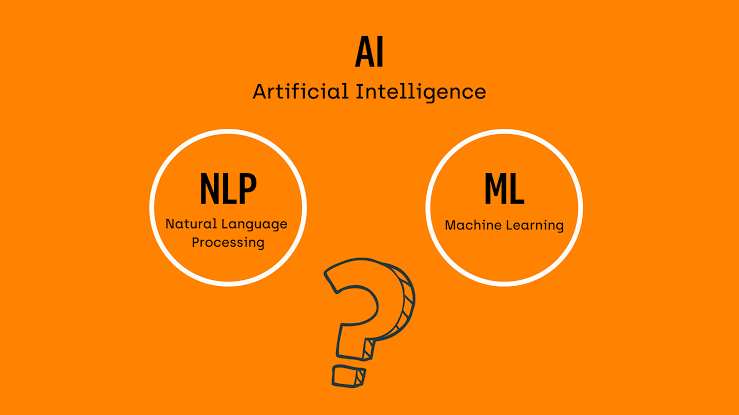Discover the fundamentals of Natural Language Processing (NLP) and its integration with machine learning. This beginner’s guide explores key concepts, applications, and challenges of NLP, offering insights into how these technologies transform human-computer interactions and impact everyday life.
Understanding Natural Language Processing
Natural Language Processing (NLP) is subfield of artificial intelligence (AI) focused on enabling machines to understand interpret and generate human language. This intersection of computer science and linguistics involves various techniques. Algorithms process and analyze natural language data. With advent of machine learning (ML), NLP has evolved significantly. Allowing for more sophisticated and nuanced interactions. Between humans and computers. This guide provides an overview of NLP and its integration with machine learning especially for those new to field.
The Basics of Natural Language Processing
NLP aims to bridge gap between human communication and computer understanding. The challenge lies in the complexity and variability of human language. This includes nuances such as context tone and ambiguity. To address these challenges, NLP encompasses several key tasks:
1. Tokenization: Breaking down text into smaller units such as words or phrases. This is essential for further analysis. Tokenization helps in parsing and understanding structure of sentences.
2. Part-of-Speech Tagging: Assigning grammatical categories to words, such as nouns verbs and adjectives. This helps in understanding syntactic structure of sentences.
3. Named Entity Recognition: Identifying and classifying entities within text, such as names of people organizations, or locations. This is crucial for extracting meaningful information.
4. Sentiment Analysis: Determining the sentiment or emotional tone expressed in a piece of text, whether positive, negative, or neutral, can provide insights into public opinion or customer feedback.
5. Machine Translation: Converting text from one language to another involves complex linguistic and contextual understanding, making it a challenging but valuable application of NLP.
Machine Learning’s Role in NLP
Machine learning, a subset of AI, involves training algorithms to learn from data and make predictions or decisions without being explicitly programmed. In the context of NLP, machine learning techniques enhance the ability to process and interpret language by leveraging large datasets and advanced algorithms. Here’s how machine learning integrates with NLP:
1. Supervised Learning: This approach involves training models on labeled data, where the correct output is known. For instance, in sentiment analysis, a model is trained on text data labeled with sentiments (positive, negative, or neutral). The model learns to predict sentiments for new, unseen text based on patterns identified in the training data.
2. Unsupervised Learning: Unlike supervised learning, unsupervised learning deals with unlabeled data. Techniques such as clustering and topic modeling are used to discover patterns or group similar items without predefined labels. For example, topic modeling can identify themes or topics in a collection of documents.
3. Deep Learning: A subset of machine learning, deep learning uses neural networks with multiple layers to model complex patterns in data. In NLP, deep learning techniques, such as recurrent neural networks (RNNs) and transformers, have revolutionized tasks like machine translation and text generation by capturing intricate relationships in language.
4. Transfer Learning: Transfer learning involves adapting a pre-trained model to a new, but related, task. In NLP, this often means leveraging large, pre-trained language models like BERT (Bidirectional Encoder Representations from Transformers) or GPT (Generative Pre-trained Transformer) to improve performance on specific tasks with limited data.
Applications of NLP in Everyday Life
NLP and machine learning have numerous practical applications that impact daily life in various ways:
1. Virtual Assistants: AI-powered virtual assistants like Siri, Alexa, and Google Assistant use NLP to understand and respond to voice commands, making tasks like setting reminders, playing music, or answering questions more convenient.
2. Chatbots: Businesses employ chatbots to provide customer support, answer frequently asked questions, and assist with transactions. NLP enables chatbots to interpret and respond to user queries effectively.
3. Content Recommendation: Platforms like Netflix and YouTube use NLP to analyze user preferences and viewing history, recommending content that aligns with individual interests.
4. Language Translation: Tools like Google Translate leverage NLP to convert text between languages, facilitating communication and access to information across linguistic barriers.
5. Text Summarization: NLP algorithms can summarize long documents or articles, providing concise versions that capture essential information, which is useful for information retrieval and consumption.
Challenges and Future Directions
Despite significant advancements, NLP and machine learning face several challenges:
1. Ambiguity and Context: Human language is inherently ambiguous and context-dependent. Understanding nuances, idioms, and context-specific meanings remains a challenge for NLP models.
2. Bias and Fairness: Machine learning models trained on biased data can perpetuate and amplify existing biases. Ensuring fairness and mitigating bias in NLP applications is an ongoing area of research.
3. Multilingual and Cross-Lingual Processing: NLP models often perform better in dominant languages like English, leaving less-resourced languages with limited support. Developing models that handle multiple languages and dialects effectively is a significant challenge.
4. Ethical Considerations: The use of NLP in sensitive areas such as surveillance and misinformation raises ethical concerns. Addressing these issues requires careful consideration of the implications and responsible use of technology.
Looking Ahead
As NLP and machine learning continue to advance, their potential to transform how we interact with technology is immense. Future developments may bring more accurate language understanding, enhanced multilingual capabilities, and improved handling of context and ambiguity. For beginners interested in exploring this field, gaining a foundational understanding of NLP concepts and machine learning techniques is essential. Engaging with resources such as online courses, tutorials, and research papers can provide valuable insights and practical skills to navigate the evolving landscape of NLP.
In conclusion, natural language processing combined with machine learning represents a dynamic and rapidly evolving field with significant implications for technology and society. By understanding its foundational concepts, applications, and challenges, beginners can appreciate the transformative potential of NLP and contribute to its continued advancement and responsible use.
